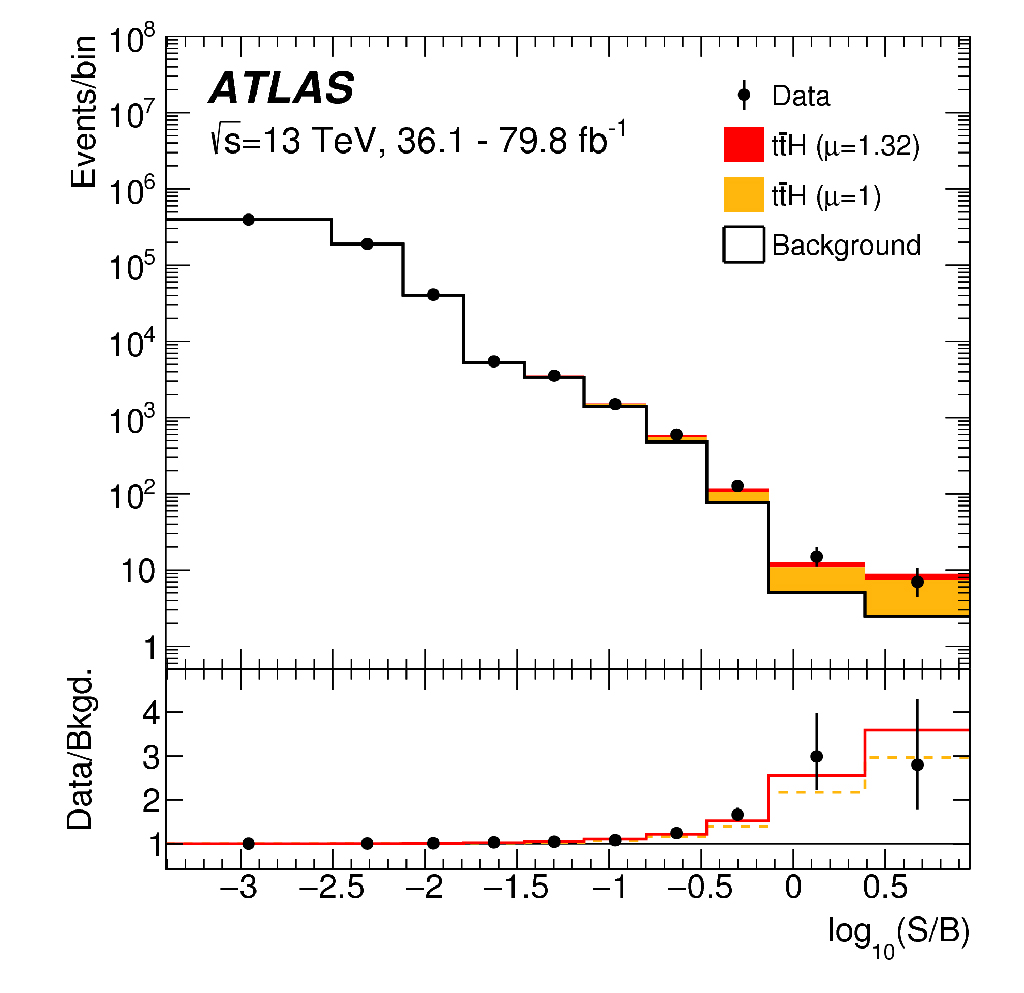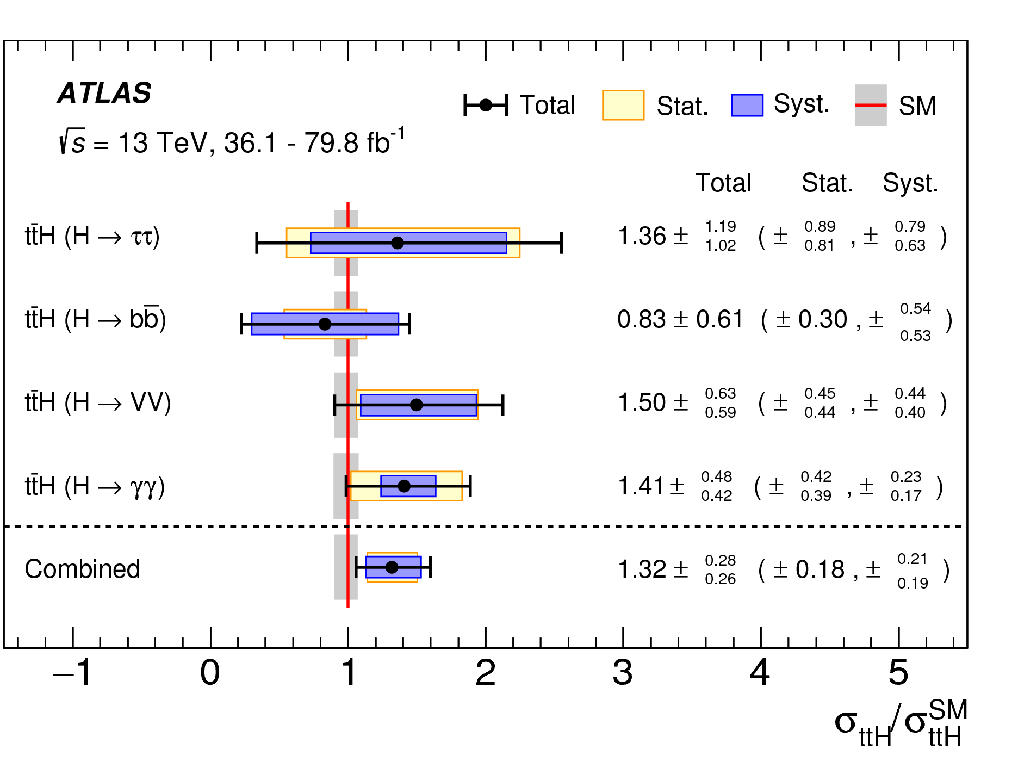Since 2009, the Large Hadron Collider (LHC) at CERN collides protons at center-of-mass energies of up to 13 TeV, the highest energy ever reached by a particle accelerator. One of the main goals of the LHC has been the search for the Higgs boson, the last missing piece of the Standard Model (SM), our most successful theory of elementary particles. The Higgs boson is the particle associated with a quantum field postulated to permeate the Universe, and responsible for endowing elementary particles with their mass. On July 4th, 2012, under lots of excitement and extensive media coverage, the ATLAS and CMS experiments at the LHC reported the observation of a new boson with properties compatible with those of the SM Higgs boson, marking the beginning of a new era in particle physics.
The ATLAS Collaboration has recently reported the observation of the production of the Higgs boson together with a pair of top quarks, known as “ttH” production [1]. Only about 1% of all Higgs bosons are produced through this rare process, and scientists have searched for them exploiting most of the Higgs boson decay modes: to two W or Z bosons, to a pair of tau leptons, to a pair of b-quarks, and to a pair of photons. The combination of these searches has reached a significance of 6.3 standard deviations, providing a first direct measurement of strength of the interaction between the top quark and the Higgs boson, known as the “top quark Yukawa coupling”. As the top quark is the heaviest particle in the SM, this measurement is one of the most sensitive tests of the Higgs mechanism.
Since 2011, IFAE scientists, under Prof. A. Juste’s leadership, are playing a major role in the search for ttH production with the Higgs boson decaying into a pair of b-quarks [2]. Recently, the IFAE team joined the analysis targeting Higgs boson decays into a pair of W/Z bosons or a pair of tau leptons [3], which holds great potential for a more precise measurement of the top quark Yukawa coupling using the ever-increasing data samples cumulated by the ATLAS experiment. Such measurement could shed new light on the nature of the Higgs boson and possibly reveal traces of new and unknown particle species.
ReferenceS

